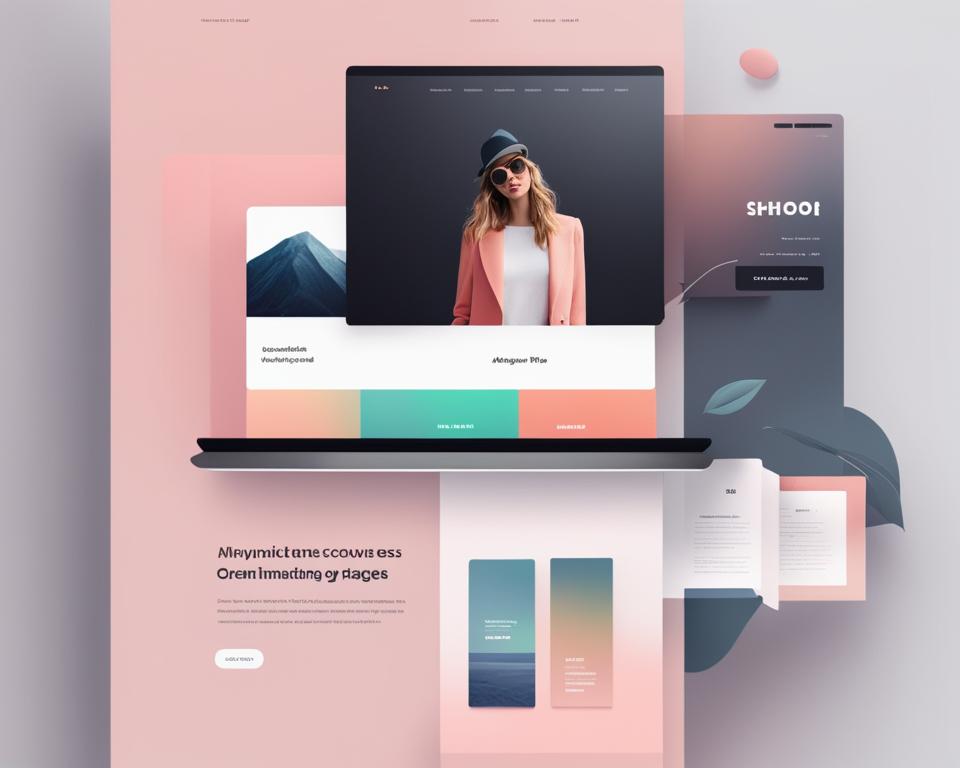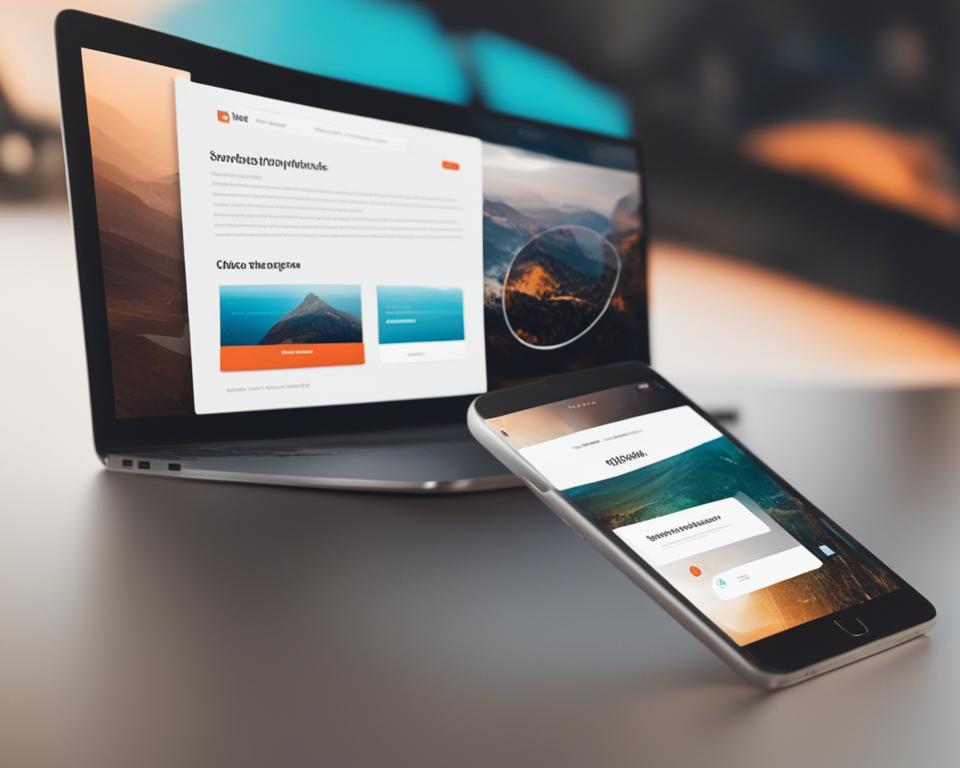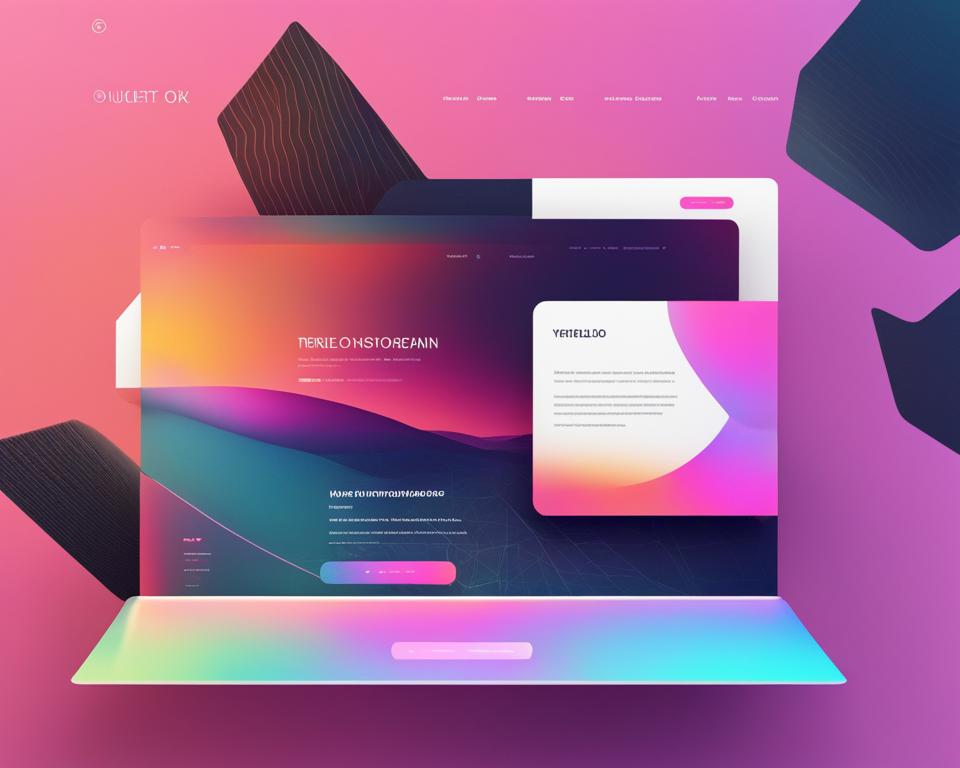Top Web Design Trends You Need to Know for Success
Rapid advancements in technology have significantly impacted website design trends. Our web design agency stays up to date with the latest web design trends, ensuring that our clients’ websites are functional, user-friendly, and aesthetically impressive. In this article, we will explore the emerging web design trends for 2023, focusing on trends that will help businesses stay ahead of the curve and achieve success in the online space.
Scrolling Animations
Scrolling animations have become an integral part of modern web design, offering an enhanced website user experience with visually captivating elements. By utilizing scrolling animations, websites can engage users through dynamic transitions and interactive effects. Elements such as images, text, and graphics can fade in or out, change colors, or move in response to a user’s scrolling actions, creating an immersive and engaging journey for visitors.
These scrolling animations not only capture users’ attention but also encourage them to explore further, increasing user engagement and interaction. By providing a visually captivating experience, scrolling animations can make a lasting impression on users and leave them wanting to delve deeper into the content of the website.
Furthermore, scrolling animations can be utilized strategically to guide users through the website, drawing their attention to key information or calls to action. This can improve the overall usability and navigation of the website, ensuring that users can easily find the information they are seeking.

Benefits of Scrolling Animations in Web Design:
- Enhanced user engagement and interaction
- Visually captivating experience that leaves a lasting impression
- Improved usability and navigation
- Guides users’ attention to key information and calls to action
Scrolling animations add a touch of interactivity and excitement to the user experience, making websites more memorable and engaging.
Key Considerations for Implementing Scrolling Animations:
- Use scrolling animations sparingly to avoid overwhelming the user
- Ensure that scrolling animations are compatible with different devices and browsers
- Optimize the performance of scrolling animations for smooth and seamless transitions
- Test the effectiveness of scrolling animations on user engagement and adjust accordingly
By incorporating scrolling animations into web design, businesses can elevate their websites to new heights, providing users with a visually captivating experience that keeps them coming back for more.
Micro-Interactions
Micro-interactions play a crucial role in enhancing the user experience of a website. These small animations provide valuable feedback to users, making their interaction with the website more intuitive and satisfying. By using micro-interactions, we can create a sense of interactivity and responsiveness that keeps users engaged and encourages them to explore further.
One of the key benefits of micro-interactions is their ability to provide instant feedback to users. For example, when a user hovers over a button or clicks on an element, a micro-interaction can be triggered to indicate that the element is interactive. This immediate response helps users understand the functionality of different elements on the website and improves the overall usability of the interface.
Micro-interactions also add a touch of delight to the user experience. By incorporating subtle animations and visual cues, we can create an enjoyable and memorable interaction for users. Whether it’s a button changing color when hovered over or a small animation that follows a user’s cursor, these micro-interactions add a sense of playfulness to the website and make it more visually appealing.
Enhancing User Engagement
In addition to providing feedback and delight, micro-interactions enhance user engagement on a website. They encourage users to explore different features and interact with various elements, ultimately leading to a deeper and more meaningful user experience. By incorporating these small but impactful animations throughout the website, we can guide users through their journey and ensure they stay connected and interested in the content.
Overall, micro-interactions are an essential element of modern web design. They offer valuable feedback, add a touch of delight, and enhance user engagement. By leveraging micro-interactions effectively, we can create websites that not only look visually appealing but also provide an intuitive and enjoyable experience for users.

3D Design
When it comes to web design, 3D design is an emerging trend that is taking interactive websites to a whole new level. By incorporating 3D elements, websites can provide users with a more immersive and engaging experience. From interactive 3D models to virtual reality integration, 3D design allows businesses to showcase their products and services in a visually stunning and captivating way.
Interactive 3D models enable users to view products from different angles, giving them a realistic sense of what they can expect. This not only provides a more engaging browsing experience but also helps potential customers make informed purchasing decisions. Moreover, virtual reality (VR) technology is revolutionizing web design by creating fully immersive experiences that transport users to a virtual world. By integrating VR into websites, businesses can offer unique and memorable interactions that leave a lasting impression.
Incorporating 3D design into web development requires advanced technical skills and tools. However, the results are worth the investment. Not only does 3D design enhance the visual appeal of a website, but it also improves user engagement and increases the likelihood of conversions. As technology continues to advance, we can expect to see even more exciting developments in the world of 3D design, pushing the boundaries of web design and creating truly extraordinary online experiences.
Dark Mode: A Modern Aesthetic with Eye Strain Reduction
Dark mode web design has emerged as a popular trend in recent years, offering a visually striking and aesthetically pleasing experience. With its dark backgrounds and light text, dark mode not only provides a modern and sleek aesthetic but also offers practical benefits such as reducing eye strain. As users spend more time on websites and digital devices, the importance of eye health cannot be understated.
By utilizing dark mode, websites can create a more comfortable browsing experience for users, particularly in low light environments. The contrasting colors make it easier for users to read text and view content without straining their eyes. This is especially beneficial for those who frequently engage with websites or apps during nighttime or in dimly lit surroundings.
Furthermore, dark mode has become a sought-after feature due to its cool and trendy appeal. It has gained popularity across various platforms, including social media, messaging apps, and operating systems. Incorporating dark mode into web design not only keeps websites up to date with current design trends but also helps captivate users with its unique and visually appealing interface.
In conclusion, dark mode web design offers a blend of style and functionality. By reducing eye strain and providing a modern aesthetic, it enhances the user experience and creates a visually captivating atmosphere. As websites continue to evolve and adapt to emerging trends, embracing dark mode can be a valuable strategy to engage users and stay ahead in the competitive online landscape.
Benefits of Dark Mode Web Design:
- Reduces eye strain, particularly in low light environments
- Provides a sleek and modern aesthetic
- Enhances user experience and engagement
- Captivates users with its unique and visually appealing interface
“Dark mode not only creates a visually striking experience but also contributes to the overall user satisfaction by reducing eye fatigue.” – Web Design Agency
AI-Powered Design
Artificial intelligence (AI) is transforming the world of web design, revolutionizing the way websites are created and optimized. With AI-powered design trends on the rise, businesses can now leverage the power of intelligent algorithms to enhance user experiences, personalize content, and drive conversions.
One of the key benefits of AI-powered design is personalization. By analyzing user data in real-time, AI algorithms can deliver highly personalized experiences tailored to each individual’s preferences and behavior. This level of personalization not only improves user engagement but also increases the likelihood of conversions by delivering relevant content and recommendations.
Predictive analytics is another area where AI is making a significant impact. By analyzing vast amounts of data, AI algorithms can predict user behavior and make data-driven design decisions. This enables web designers to optimize layouts, navigation, and content placement to create highly efficient and user-friendly websites.
AI-powered chatbots and visual search capabilities are additional examples of how AI is enhancing web design. Chatbots can provide instant support and answer customer queries, offering a seamless user experience. Visual search allows users to search for products or information using images, making the search process more intuitive and efficient.
Sustainable Web Design
Sustainable web design is a growing trend in the digital world, and we are committed to incorporating eco-friendly elements and minimalism into our web design projects. By embracing sustainable practices, we not only contribute to a healthier planet but also create websites that are visually appealing and efficient.
One aspect of sustainable web design is using eco-friendly color schemes. By choosing colors that are gentle on the eyes and have a low environmental impact, we create a harmonious and soothing visual experience for users. From soft neutrals to earthy tones, our color palettes reflect our dedication to sustainability.
In addition to color choices, minimalism plays a significant role in sustainable web design. By adopting a less-is-more approach, we eliminate unnecessary clutter and streamline the user experience. Minimalist designs are not only aesthetically pleasing but also contribute to faster loading times and reduced energy consumption.
Optimized performance is another key aspect of sustainable web design. By implementing efficient coding techniques, compressing images, and utilizing caching mechanisms, we ensure that our websites operate smoothly and consume minimal resources. This not only benefits the environment but also provides users with a seamless browsing experience.

